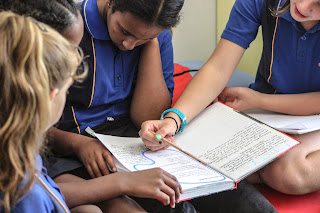Writer's Notebooks And Summer Promises

At the end of each school year, I write, urging teachers to quarantine a little time for writing over the summer vacation period. This year my message remains on song. If you are a teacher who writes, it is easier to present as a writer who teaches. In recent weeks I have met numerous teachers who have told me they will be taking up the challenge of keeping their own writer’s notebooks. Well, that notebook will need feeding and the summer presents as a potential feast… I am aware of the level of exhaustion that exists in schools at year’s end. The need to tie up a multitude of loose ends prior to school closing for the summer holidays is paramount. It’s a race to the finish line. The last week of school seems to take the longest time of all the many school weeks though. School becomes the epicentre of fatigue for both students and staff. I am also aware that on summer’s horizon teachers will have free time to relax and regenerate their energy reserves. A time fo...





